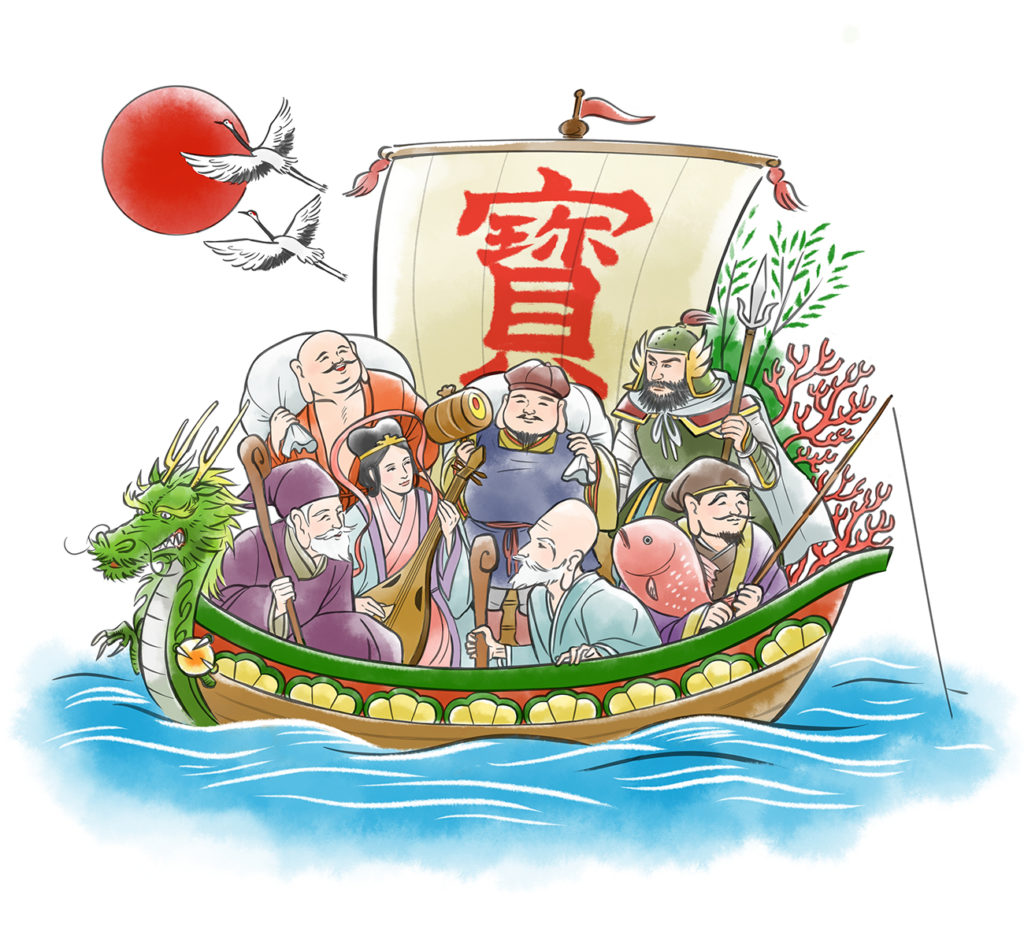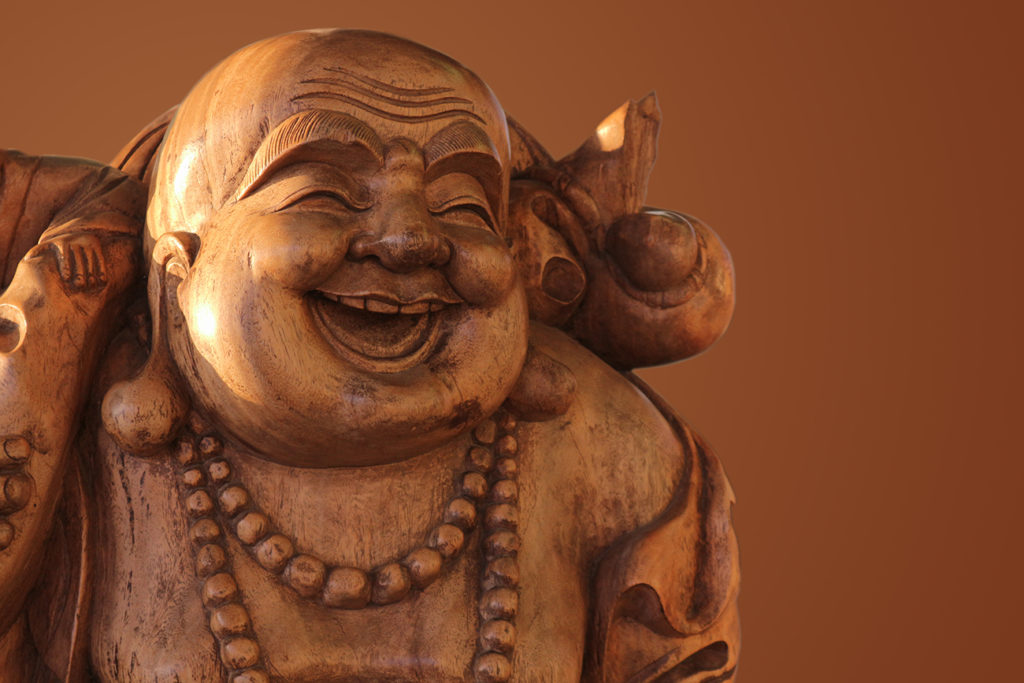
Hotei: The Japanese Santa Claus
The holidays in Japan, specifically Christmas, is more of a family celebration than a religious event. There are a number of festivities and traditions that are lined up to make the merriest time of the year be more spectacular to cap of the year. One figure that is synonymous to Christmas is Santa Claus. Did you know that Japan has its own version of “Old Saint Nick”?
Japanese deities
The Seven Gods of Fortune (七福神 / Shichi Fukujin) or Seven Lucky Gods, are a staple of Japanese mythology and folklore and are popular subjects for figurines or carvings. These Japanese divinities are derived from native religious beliefs and traditions derived from Shintoism, Taoism, or Buddhism.
 Many of the deities in Japanese folklore and all of the Seven Lucky Gods, except for Ebisu and Hotei, originated from China (some with Indian influence) and are mostly depicted on their ship, the Takarabune (宝船), or “Treasure Ship.” Tradition dictates that these gods will arrive on New Year’s Day to give out gifts to deserving people. Children receive envelopes of money with the Takarabune printed on it. Images of the Seven Lucky Gods are also present during festivals and other celebrations. These seven deities are an important part of Japanese culture and traditions.
Many of the deities in Japanese folklore and all of the Seven Lucky Gods, except for Ebisu and Hotei, originated from China (some with Indian influence) and are mostly depicted on their ship, the Takarabune (宝船), or “Treasure Ship.” Tradition dictates that these gods will arrive on New Year’s Day to give out gifts to deserving people. Children receive envelopes of money with the Takarabune printed on it. Images of the Seven Lucky Gods are also present during festivals and other celebrations. These seven deities are an important part of Japanese culture and traditions.
Hotei, the god of fortune
One of the Seven Lucky Gods is Hotei (布袋), the god of fortune, patron of diviners and barmen, the god of popularity and the guardian of children. Much like Santa Claus’ origins, Hotei was based on a real-life person, a Chinese monk named Budai and, in some legends, Kaishi, who passed away in 916 A.D. and is much revered in Buddhism beliefs. In Chinese folklore, Hotei is known as the “Laughing Buddha.” In kanji, Hotei’s name means “cloth sack”. He is often depicted as a rotund, bald, smiling man with a curly moustache.
It is said that before Zen Buddhism even arrived to Japan, there was a similar belief that was being taught by a priest of doubtful background. This priest was a manifestation of Miroku, the patron of those who could not be saved by Buddha. Hotei was accepted in Japanese beliefs to be another Miroku.
We all know Santa’s sack is filled with toys. Hotei’s sack may be a tad unpredictable. It can be anything at all from clothing, plants to even things that are not tangible. Hotei is said to be at his happiest when with children. This is one reason why he is strongly associated with Santa. Some differences in their philosophies are, while Santa is known to give out presents to young and old alike, Hotei seems miserable around older people. Santa’s jiggly belly is from Christmas treats left out for him, Hotei’s enormous stomach is from the overflowing love for humanity where in Japanese beliefs, the soul rests in the tummy. While Santa may balk at taking something in return from whoever receives his gifts, Hotei won’t mind if children return the favor.

